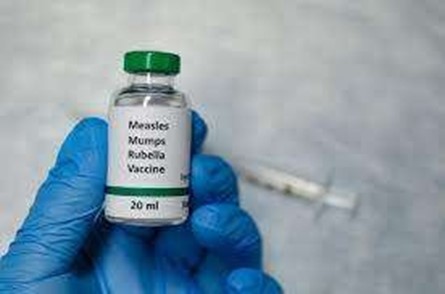A nurse is providing teaching to a postpartum client who has a prescription for a rubella immunization.
Which of the following client statements indicates understanding of the teaching?
"I will receive a series of three immunizations and each one will be a month apart.”
"I will report joint pain that develops after the immunization to my provider immediately.”
"I should avoid becoming pregnant for at least 1 month following the immunization.”
"I should avoid breastfeeding for 2 weeks following the immunization.”
The Correct Answer is C
Rubella vaccine is a live atenuated vaccine and women should avoid pregnancy for at least 28 days after receiving the vaccine.

Choice A is incorrect because the rubella vaccine is given as a single dose, not a series of three immunizations.
Choice B is incorrect because joint pain is a common side effect of the rubella vaccine and does not need to be reported immediately to the provider.
Choice D is incorrect because breastfeeding is not contraindicated following rubella immunization.
Nursing Test Bank
Naxlex Comprehensive Predictor Exams
Related Questions
Correct Answer is ["1227"]
Explanation
Naegele’s rule is a method for estimating the due date of a baby based on the woman’s last menstrual period (LMP).
It involves adding seven days and subtracting three months from the first day of the LMP.
It assumes a 28-day menstrual cycle and a 280-day gestation period, which may vary for different women 1.
Using this rule, if the client’s last menstrual period was March 20, then adding seven days would give March 27.
Subtracting three months would give December 27 of the previous year.
Adding one year would give December 27 of the current year, which is the estimated date of delivery in MMDD format: 1227.
Correct Answer is B
Explanation
The correct answer is. Administering broad-spectrum antibiotics.
Cleansing the site with povidone-iodine is not recommended because it can be irritating and potentially harmful to the exposed neural tissue.
Monitoring the rectal temperature every 4 hours is not appropriate as it can increase the risk of infection and trauma to the site. Axillary temperature monitoring is preferred.
Preparing for surgical closure after 72 hours is incorrect. Surgical closure is typically performed within the first 24 to 48 hours to prevent infection and further damage to the neural tissue.
Administering broad-spectrum antibiotics is crucial to prevent infection, especially since the cerebrospinal fluid is leaking, which increases the risk of meningitis and other infections.
Whether you are a student looking to ace your exams or a practicing nurse seeking to enhance your expertise , our nursing education contents will empower you with the confidence and competence to make a difference in the lives of patients and become a respected leader in the healthcare field.
Visit Naxlex, invest in your future and unlock endless possibilities with our unparalleled nursing education contents today
Report Wrong Answer on the Current Question
Do you disagree with the answer? If yes, what is your expected answer? Explain.
Kindly be descriptive with the issue you are facing.
